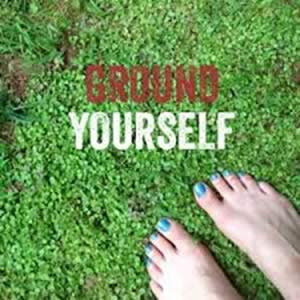When dealing with trauma humans tend to utilise both approach and avoid strategies: sometimes focussing intently on trauma (even unwillingly in the form of flashbacks or nightmares) and at other times completely ignoring trauma (eg ‘forgetting’, going numb, shutting off feelings).
Sometimes trauma survivors think about the past, even when they don’t want to. They can ‘get lost’ in memories, or ‘go away in their head’, ruminating over a distressing event. They sometimes tell their story over and over again, especially to therapists, thinking this will heal them. They may also have bad memories, nightmares and flashbacks. Many also read about other people’s trauma on this internet or in books.
But this is often not helpful. The truth is each time the mind goes over the trauma event it reacts like the survivor re-experiences the event. The body is flooded with the same stress and trauma related hormones. The brain reacts in the same way – it shuts down with fear! The survivor feels more and more upset. Hearing the stories of other people can also be upsetting.
While, in therapy, processing trauma can be very healing, this needs to be done at the right time, and with the guidance of a professional. This type of trauma processing is very different to ruminating or re-living trauma.
Often when outside of therapy, trauma survivors need to learn to live in the present, not the past. They benefit from learning to spend time ‘staying in the present’. This doesn’t mean denial or suppression of trauma memories or stopping all trauma processing. It just means giving yourself a break, having balance in your life. It means not letting the past steal your present.
Some examples of ways to stay present in everyday life include:
Gardening – sit walk or stand in your garden, breathe in the air, smell the scents of plants. Dig in the soil and feel it in your hands. Notice if it is soft or hard, warm or cold. Touch small plants. Notice how they feel. Observe how plants change with the seasons, how they grow and watch flowers and fruit develop. Feel the sun on your skin. Listen to the sounds of birds and lizards as they go about their daily lives.
Cooking – enjoy the smell of foods as you chop them and cook them. Listen to the sounds as they cook. Enjoy the feel of pastry or dough in your hands. Remember to taste foods too.
Walking – enjoy the sun on your skin and the feeling of the breeze. Notice the feeling of your feet on the ground. Notice your body as you move. Notice the scenery around you. You may see birds, flowers and trees as well as buildings and cars. Listen to the sounds around you.
Patting your pets – stroke your pets and feel  their fur underneath your hands. Feel their bodies in your arms or on your lap. Listen to the small sounds they make as they communicate. Watch your pets as they move, play and snuggle.
their fur underneath your hands. Feel their bodies in your arms or on your lap. Listen to the small sounds they make as they communicate. Watch your pets as they move, play and snuggle.
Watch a comedy on television – enjoy something light-hearted. Laughter releases all sorts of hormones that reduce stress.
Get outside in nature – Go and sit in a local park, go to the beach for a walk or swim. Look at your surroundings. Notice the small things: the flowers, a snail, a small lizard sun-baking. Smell grass. Listen to the sounds of the birds. Being nature is healing and soothing.
In all these activities it is normal for your mind to start thinking again. You may have memories of trauma, or you may start to worry about something. When this happens, just acknowledge it and bring your attention back to the activity you are doing.
This is a gentle process so be kind to yourself. Start with little practices, just minutes at a time and build up. Be creative- find your own activities t focus on and stay present.
 oor. Can you feel the floor under your feet? Is it smooth floorboards or carpet? Do you have shoes on? What do your feet feel like in your shoes?
oor. Can you feel the floor under your feet? Is it smooth floorboards or carpet? Do you have shoes on? What do your feet feel like in your shoes?


